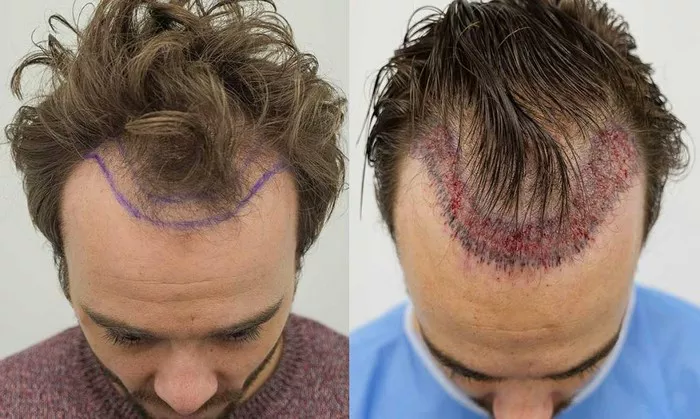Hair transplant surgery has come a long way in providing effective solutions for hair loss. One common question many individuals have is about the number of hair follicles that can be transplanted in a single session. In this informative guide, we’ll explore the factors that determine the maximum number of hair follicles that can be transplanted and provide insights into what you can expect from your procedure.
Understanding Hair Transplant Sessions
Hair transplant sessions involve the surgical transfer of hair follicles from a donor area to a recipient area experiencing hair loss. The number of sessions required depends on factors like the extent of hair loss, the donor’s hair density, and the desired outcome. A session may involve thousands of grafts, and multiple sessions might be necessary for a fuller result. Sessions are spaced several months apart to allow the transplanted hair to establish and the scalp to heal. The process aims to restore natural hair growth, and individual needs vary, so consultation with a hair transplant specialist is essential for a personalized plan.
See Also: Does Sweating Affect Hair Transplant? Unveiling the Impact
How Many Hair Follicles Can Be Transplanted in One Session?
The number of hair follicles that can be transplanted in one session varies based on several factors. Generally, modern techniques like FUT (follicular unit transplantation) or FUE (follicular unit extraction) allow for the transplantation of around 2,000 to 5,000 grafts in a single session. Each graft can contain one to a few hair follicles. The decision on the exact number of grafts depends on factors like the patient’s donor hair supply, the recipient area’s size, and the desired density. A consultation with a qualified hair transplant specialist helps determine the appropriate number for the best results.
Factors Affecting the Number of Transplanted Hair Follicles
The number of hair follicles that can be transplanted in a session is influenced by several factors:
1. Donor Area
The density and availability of hair in the donor area significantly impact the number of hair follicles that can be transplanted. Patients with a higher donor hair density may be able to have more follicles transplanted.
2. Recipient Area
The size and extent of the recipient area (where the hair will be transplanted) also play a role in determining the number of grafts that can be transplanted. Larger areas may require a higher number of grafts.
3. Technique Used
The choice between FUT and FUE can influence the number of grafts that can be transplanted. FUE is typically more time-consuming and labor-intensive, which may affect the number of grafts transplanted in a single session.
4. Surgical Team’s Expertise
The skill and experience of the surgical team performing the transplant play a crucial role. An experienced team may be able to complete the procedure more efficiently, allowing for a higher number of grafts.
5. Patient’s Goals
The patient’s desired outcome also affects the number of grafts. Some patients may prefer a more conservative approach, while others may opt for a denser result.
6. Healing and Recovery
The body’s ability to heal and recover from the surgery can impact the number of grafts that can be safely transplanted. Adequate healing time is essential to ensure graft survival.
Consultation with a Specialist
Determining the appropriate number of grafts for your individual needs requires a thorough consultation with a hair transplant specialist. During this consultation, the surgeon will assess your donor area, recipient area, and discuss your desired outcome. They will provide recommendations tailored to your specific situation and goals.
Conclusion
The number of hair follicles that can be transplanted in one session depends on various factors, including the technique used, donor area, recipient area, and surgical team’s expertise. To get an accurate estimate of the number of grafts suitable for your case, it’s essential to consult with a qualified hair transplant specialist. By understanding these factors and working closely with your surgeon, you can achieve the best possible results and restore the appearance of a full head of hair.


